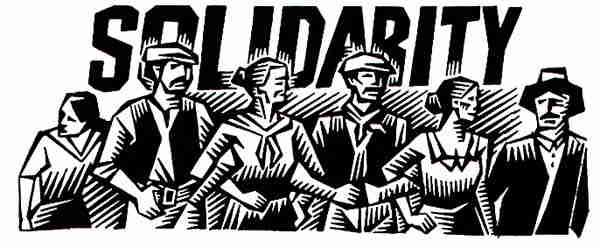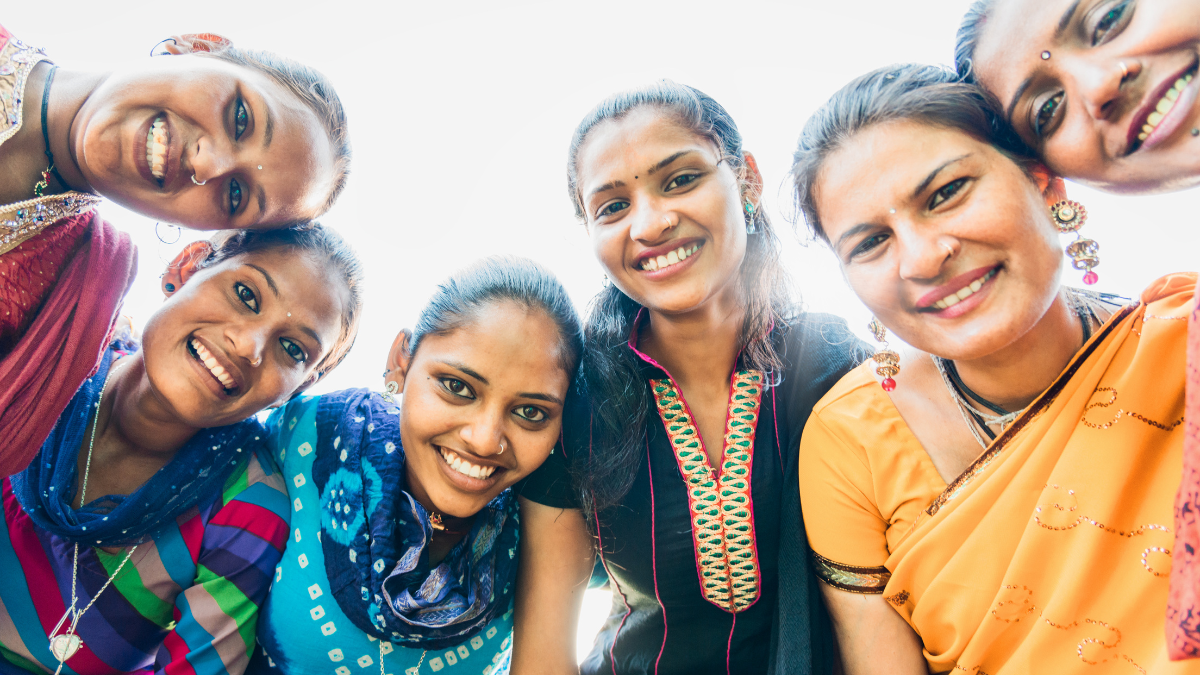With a global surge in political movements and the use of social media, there is a lot of what’s known as “hashtag activism”, where someone posts about their support for a cause on social media without really doing anything else. A popular word thrown around in these posts is the word “solidarity”.
But what does solidarity mean? And what does it look like? Black feminist scholar bell hooks states that solidarity is different than support, which is a mistake many people make. It is about engaging in an action for the long-run, it’s about being committed and making bonds with people in struggles similar to yours. She once described the ideal form of solidarity as the solidarity of sisterhood, which later to be more gender inclusive is referred to as transformational solidarity, which should be the goal of any ally-ship. Transformational solidarity has an emphasis on kinship and collective liberation.

Everyone wants to help, but it’s hard to know exactly how. Here are different types of solidarities and the steps you can take to achieve transformational. This method is by no way the most comprehensive, it’s a mixture of different formats developed by multiple people, and I’ve broken it down in the way I find it most accessible.
Verbal/Expressive Solidarity
This is the simplest, and most common form of solidarity. It’s most often seen on social media after a tragedy or event happens when people only say they’re in support of a cause and don’t turn that verbal support into any tangible action. While verbal solidarity can be helpful in showing a marginalized group that you see their grievances, it does not do more than that.
Many people who only give verbal support are waiting for someone to tell them what to do. It’s important to decenter yourself and to just do.
Verbal solidarity doesn’t even have to be verbal, hence the term expressive solidarity also applies. That is when people don’t necessarily have to “say” something but they express their stance with a movement by displaying something, such as wearing a color or a safety-pin in support of some cause.
Reactionary Solidarity
Reactionary solidarity is probably the first thing you think of when you hear the word solidarity. Similar to verbal solidarity, reactionary solidarity tends to happen only when an event or tragedy happens but people will engage a little more than just giving verbal support. Reactionary solidarity looks like attending a protest or donating money in response to an event. So, if you only go to protests against Muslim lynchings but have not invested time and energy into the issue or community, you’re simply engaging in a reactionary way.
Also read: Not In My Name – Delhi Protests The Lynching Of Minorities
What’s important to note, is that reactionary solidarity is one of the most powerful places where people first get invested in a cause. Sometimes it takes for an issue to come to the limelight for people to even hear about it. It is more important is that you know that to be a good ally you have to go beyond reactionary, while it’s a great first step, it should not be where your activism ends.
Transactional Solidarity
Transactional Solidarity is when your solidarity only extends to people who have extended their support back to you. People notice their own oppressions more than their privileges and when people show up in any way for a cause that impacts you, there is this economy of debt and guilt that is created. Irrespective of examining someone’s ability, awareness, access, or agency, to explain why they didn’t show up.
While transactional solidarity sometimes makes people feel guilty enough into showing up with their bodies, it doesn’t necessarily produce the results for long-term change or to sustain a movement. It’s important to realize that sometimes people can’t show up for you or don’t know how to. Just like you may not know how to show up for others, and in those instances, if we resort to this capitalist method of a transaction we will not achieve collective liberation.
Some people also use transactional solidarity to gain social capital. This is where the transaction that occurs is them seeming more politically aware, even if it doesn’t amount to any more social justice work.
What also happens in these transactional situations is that people aren’t necessarily mindful of the full implications of an issue, since they are only present for the social capital or return investment.
Manifested Solidarity
This is a step above reactionary solidarity, where you don’t simply show up with your body but you also put yourself at risk for the benefit of impacted communities. This kind of solidarity forces people out of their comfort zone and shows your long-term commitment to a movement. If you’re able to partake in it, manifested solidarity deflects harm from more marginalised communities.
For instance, at the recent G20 demonstrations in Germany, a white man dressed up in business casual clothes and would cross the street with his bike to de-escalate tension, as he knew the police wouldn’t say or do anything to him.
Manifested solidarity is very close to becoming transformational because it comes with the understanding that you might have to give something up in order for other communities to gain something.
Transformational Solidarity
Transformational Solidarity is the goal of solidarity. Transformational is understanding that all issues are intertwined and work in balance with each other. Transformational Solidarity is constantly being engaged in the betterment of other communities, as you realize that someone else’s struggle also impacts yours. While manifested solidarity has a focus on ability, transformational doesn’t.
Even people who cannot guarantee that their bodies can be in a space, or that they have the time/resources to understanding every intersection, can still engage in transformational solidarity by making sure their goal of collective liberation is in everything they engage with. That can look like educating people about the ways these things intersect, surrounding yourself and building long-term relationships with people who believe in the same as you. You should then reach a place where you’re not just reacting or speaking, but you have invested in an issue for the long term. This also looks like taking care of and emotionally supporting those who are most effected and integrating that into your daily life.
Take-Away
While any support or solidarity is important, it’s important that activists strive to collective liberation. It might not necessarily be the easiest or most tangible thing to achieve, and I’m not even sure if it is possible, but it is the most sustainable form of growth.Of course, these different types overlap, and you might even see yourself engaging in multiple forms of solidarity at once. Activism is a continuously growing learning experience which morphs and changes your understanding of issues while you learn about struggles outside of your own. So while reactionary solidarity might work for something, being committed for the long-run, in ways that transform your everyday life is much more powerful. If it seems hard to do that, at least try.
What I also suggest that instead of using this framework to judge other people’s solidarity, you should instead use it to analyze the ways you’ve shown up and not shown up in the past because it’s important to hold yourself accountable.
References:
- #Asians4BlackLives
- BlackGirlDangerous
- EclectaBlog
- The Cycle of Liberation by Bobbie Harro
- How is Global Gender Solidarity Possible by Ann Ferguson
- Decolonizing Together: Moving Beyond a Practice of Solidarity Toward a Practice of Decolonization by Harsha Walia
- Sisterhood: Political Solidarity Between Women by bell hooks
About the author(s)
Jasveen is currently a student at the New School studying poetry, race and ethnicity, and gender studies. You can find her either in New Delhi or New York. She's interested in gender justice, religion, diverse art, and class reform. Her twitter is: @jasveenflies




